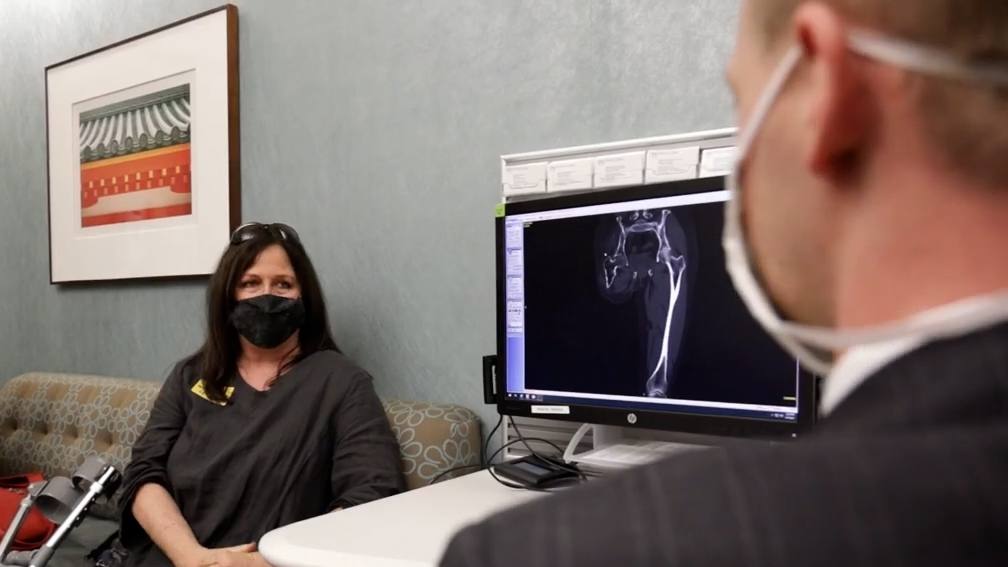
More than 3.6 million people in the U.S. are living with limb loss, according to the Amputee Coalition. Most are lower limb amputations resulting from diabetes, trauma and cancer.
In March 1983, Mary Shalz was 18 years old when a diagnosis of bone cancer changed how she walked.
"That was when they did the above-knee amputation," says Mary.
Watch: 39 years after amputation, a new procedure is helping Mary Shalz walk comfortably.
Journalists: Broadcast-quality video pkg (1:50) is available in the downloads at the end of the post. Please courtesy: "Mayo Clinic News Network." Read the script.
The amputation did not interfere with her goals of pursuing a career in teaching, getting married and becoming a mother. But the prosthesis she wore was uncomfortable, and she came to rely on crutches.
"Mary has an extremely short residual limb, which poses difficulty with being able to fit her with the socket," says Dr. Benjamin Wilke, a Mayo Clinic orthopedic surgeon. "So, Mary has had constant problems."
In 2020, a member of Mary's care team explained a new option that may make walking with a prosthesis more comfortable: osseointegration.
"With osseointegration, we're putting in an implant directly into the bone, the bone is growing on to that implant, and then the prosthetic limb actually attaches to the implant," says Dr. Wilke.
Osseointegration requires team members from different fields, including radiology, orthopedic surgery, plastic and reconstructive surgery, and more to perform two procedures months apart.
During the first surgery, a metal implant is placed directly into the residual bone. After giving the bone time to grow around the implant, a second procedure exposes the implant outside the residual limb and brings muscle and soft tissue together in a way that reduces the patient's risk of infection. Rehabilitation is necessary to strengthen the muscles and bone. After rehabilitation, the patient can connect a new prosthetic directly to the implant.
The entire osseointegration process takes nine months to one year. In addition to eliminating socket-based prosthetics, osseointegration improves patients' gait and mobilize with a more normal walking cadence than somebody who has a traditional socket, says Dr. Wilke.
"I just felt like it was an opportunity that I had to take," says Mary.
She became the first patient at Mayo Clinic in Florida to undergo the procedure. Healing would take months, but checkups along the way showed the bone was growing properly. By October 2021, Mary was on track for a more mobile lifestyle.
"The freedom of just clicking on this new prosthesis and going is just really exciting to me," says Mary.
Her first steps in a new prosthesis came in February, followed by a ride on a stationary bicycle not long after.
"I see the future is just me being somebody who is just — it sounds weird — walking so much more."
Mary's hope is that her journey paves the way for others, showing why it's important to never give up.
"I think the key is just to let people know that they can have a great life, even if they have had an amputation — that there are so many possibilities out there with a prosthesis to keep people motivated to live their best life," says Mary.
Related: Osseointegration surgery helps amputees regain mobility
For the safety of its patients, staff and visitors, Mayo Clinic has strict masking policies in place. Anyone shown without a mask was recorded prior to COVID-19 or recorded in an area not designated for patient care, where social distancing and other safety protocols were followed.







